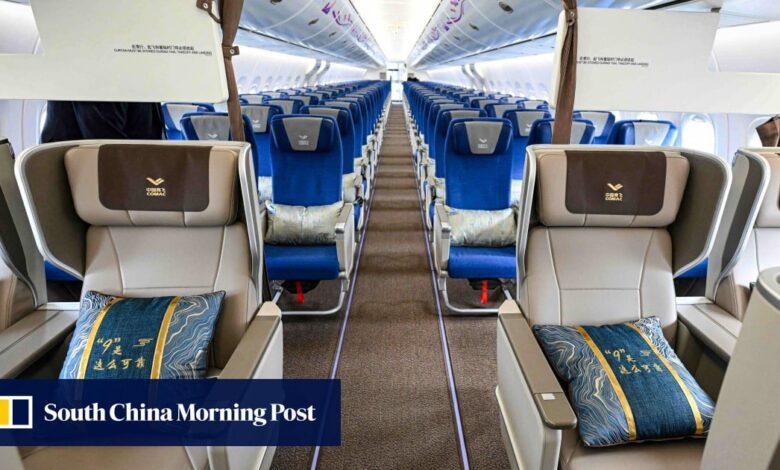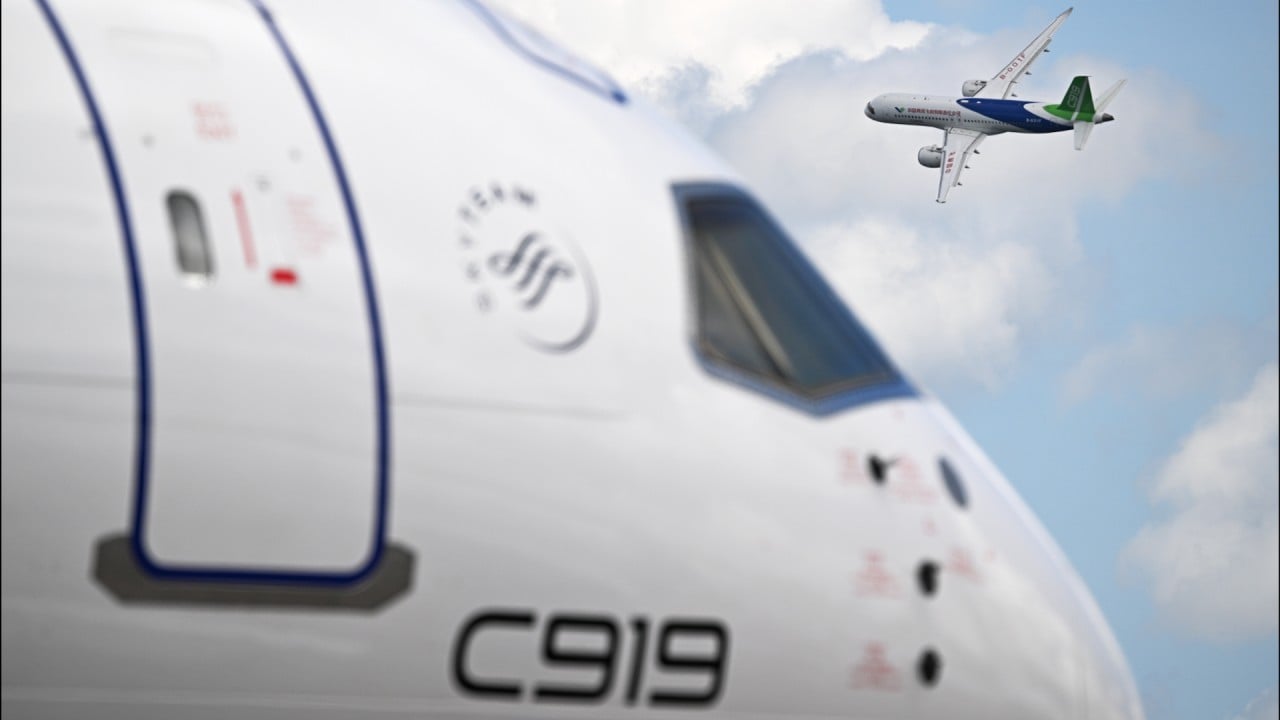Exclusive | China’s C919 edges closer to EU landing as regulators give ‘positive’ feedback

In a corporate circular last year, the plane’s state-owned manufacturer Commercial Aircraft Corporation of China (Comac) said these simulators featured a full-size replica of the model’s cockpit, significantly improved visuals and an expanded horizontal field of view for each pilot, with additional motion effects to more accurately simulate various in-flight events.
EASA representatives also boarded a C919 plane, their second hands-on look after an earlier visit in March, spending hours checking the cockpit and cabin and discussing specifics with their Chinese counterparts.
“They had a sharp eye on everything and also asked about a lot of details,” the source said. “They paid extraordinary attention to C919 commercial operations in domestic airlines.”
During compliance demonstration, an aircraft manufacturer must demonstrate its product conforms to regulatory requirements regarding structure, engines, control systems, electrical systems and flight performance.
“This step is done by EASA analysts during ground testing, including tests in simulators, as well as during flight … This is the longest phase of the type-certification process,” according to the EU regulator’s website.
No test flights were held during last month’s evaluation, with the source saying those are likely to be set up later this year or early next year.
EASA and the Civil Aviation Administration of China, the domestic regulator, did not immediately reply to separate email requests for comment.
“It now looks more optimistic for EU certification in 2025,” the source added.
EASA approval is viewed as vital for the overseas expansion of the C919, a narrowbody aircraft intended to compete with Airbus’ A320 series and Boeing’s B737 family.
Air China and China Southern Airlines – the country’s two other major state-owned carriers – are set to receive their first planes this month, following separate 100-unit orders in April, and Shanghai-based Suparna Airlines has been confirmed as the first private carrier to commit to a C919 purchase.
Comac’s efforts to earn an EASA endorsement for its marquee aircraft is only one part of its plan to expand the plane’s global reach, with Southeast Asia and the Middle East already on its radar.
Indonesian budget carrier TransNusa – operator of Comac’s ARJ21 regional airliner – and start-up GallopAir of Brunei have been tipped as likely purchasers so far.
Although EASA certification is not a prerequisite for sales in these regions, its approval would bolster the C919’s reputation and add more appeal to foreign buyers.
Source link




